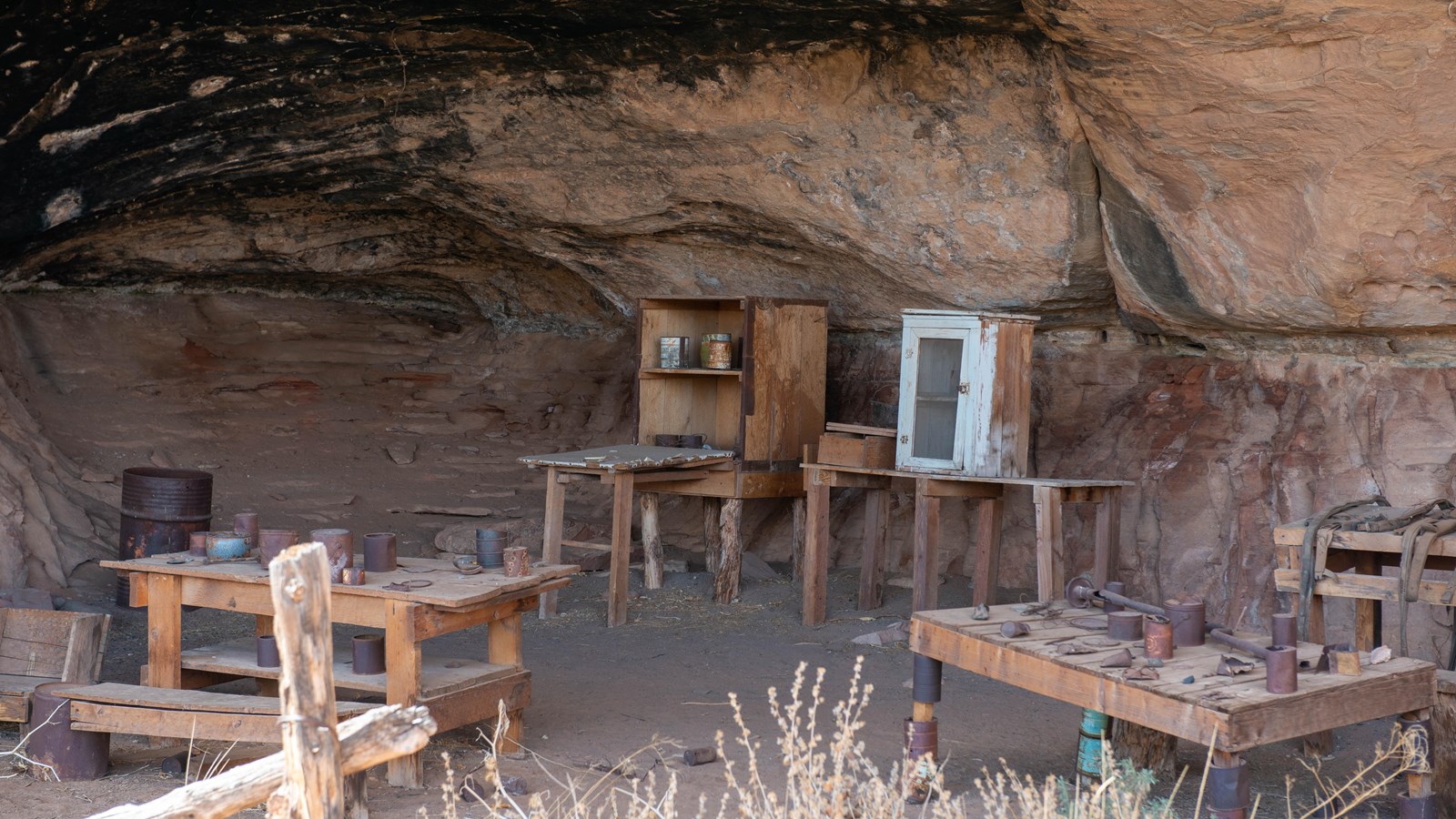Last updated: July 11, 2024
Place
Canyonlands' Cave Spring Trail

NPS/Neal Herbert
This is the trailhead for a short, 0.6-mile (1 km) loop leading to a historic cowboy camp and prehistoric rock markings. You will climb two ladders to complete the route.
- Roundtrip Distance: 0.6 mi (1 km) Time: 45 min
- Elevation Change: 67 ft (20 m)
- Difficulty: Easy
- Hike Description: This short loop leads to a historic cowboy camp and prehistoric rock markings. You will climb two ladders to complete the route. Entering, touching, or climbing on archeological sites is strictly prohibited. View structures from a distance to protect fragile walls.
- Accessibility: This trail can be rough, uneven, and requires walking up and down a rocky hill and stone steps. It is not accessible to wheelchairs. In winter, there may be snow or icy conditions; we recommend traction devices for hikers.
- Dogs are not allowed on this trail. Service animals are allowed in national parks. What is a service animal?
Descendants of these people still live in the region and consider the spring a sacred place. Help protect our heritage by not entering the spring. Do not touch or mark the rock markings. It is a violation of federal law to deface pictographs.
Canyon Country
The geology and climate of Canyonlands have created an unusual landscape characterized by maze-like canyons, sheer cliff faces, strange rock formations, deep crevices, and alcoves. Some areas are hospitable to life; some are not. Water plays a major role in determining suitable habitat for humans as well as plants and animals. As you hike Cave Spring Trail, notice how the presence of water has affected each area. Plants, animals, and people have all played a part in shaping the environment we see today. In turn, the canyons have molded the behavior, adaptations, and character of the inhabitants.
Cowboys
In the late 1800s pioneering cattlemen settled in canyon country and carved successful cattle operations out of this desert.
Widespread ranching required cowboys to stay on the open range with their cattle. They lived in isolated outdoor camps such at this one near Cave Spring. They used these camps from the late 1800s through 1975, when cattle ranching ended inside the park. Many original items left by the cowboys remain. Please do not enter the camp, touch, or remove the objects.
The cowboys cooked over an open fire, using Dutch ovens and other simple cookware. Usual cowboy fare included beans, bacon, potatoes, canned goods, sourdough biscuits, and the ever-present coffee.
Cowboys established the camp at Cave Spring because of the reliable water source. Rainwater percolating through layers of porous sandstone forms these seeps. Moisture hastens erosion of the rock face and carves alcoves.
Sacred Water
Springs are rare in the desert. In the alcove beyond the cowboy camp, you may notice soot-blackened ceilings, handprints, & painted figures. These tell us that this precious resource also attracted earlier people. Ancestors of today's Native Americans occupied these canyons six millennia before the cattlemen arrived, about 6,000 to 700 years ago.
Before the adoption of corn agriculture, Native Americans kept on the move. They followed the annual migrations of their prey and camped near areas with fresh water and plants they could use. Once they domesticated foods like squash, corn, and beans, they moved less and began farming. They left the area when the water table dropped following prolonged drought, making farming difficult.
Plants and Animals
Few plants can survive the intense heat and dryness of bare rock. Shallow pockets of soil support the growth of biological soil crust. This crust is made up of cyanobacteria, lichens, moss, fungi, and algae, and it is an essential component of the desert ecosystem. It protects soils from wind and water erosion and enriches them with nitrogen and other nutrients. Biological soil crust can take years to grow, and careless footsteps can crush it. Tracks remain visible for decades. Please stay on established trails or bare rock.
You can learn about plants and how people have made use of them over time. Signs mark specific plants along the trail.
